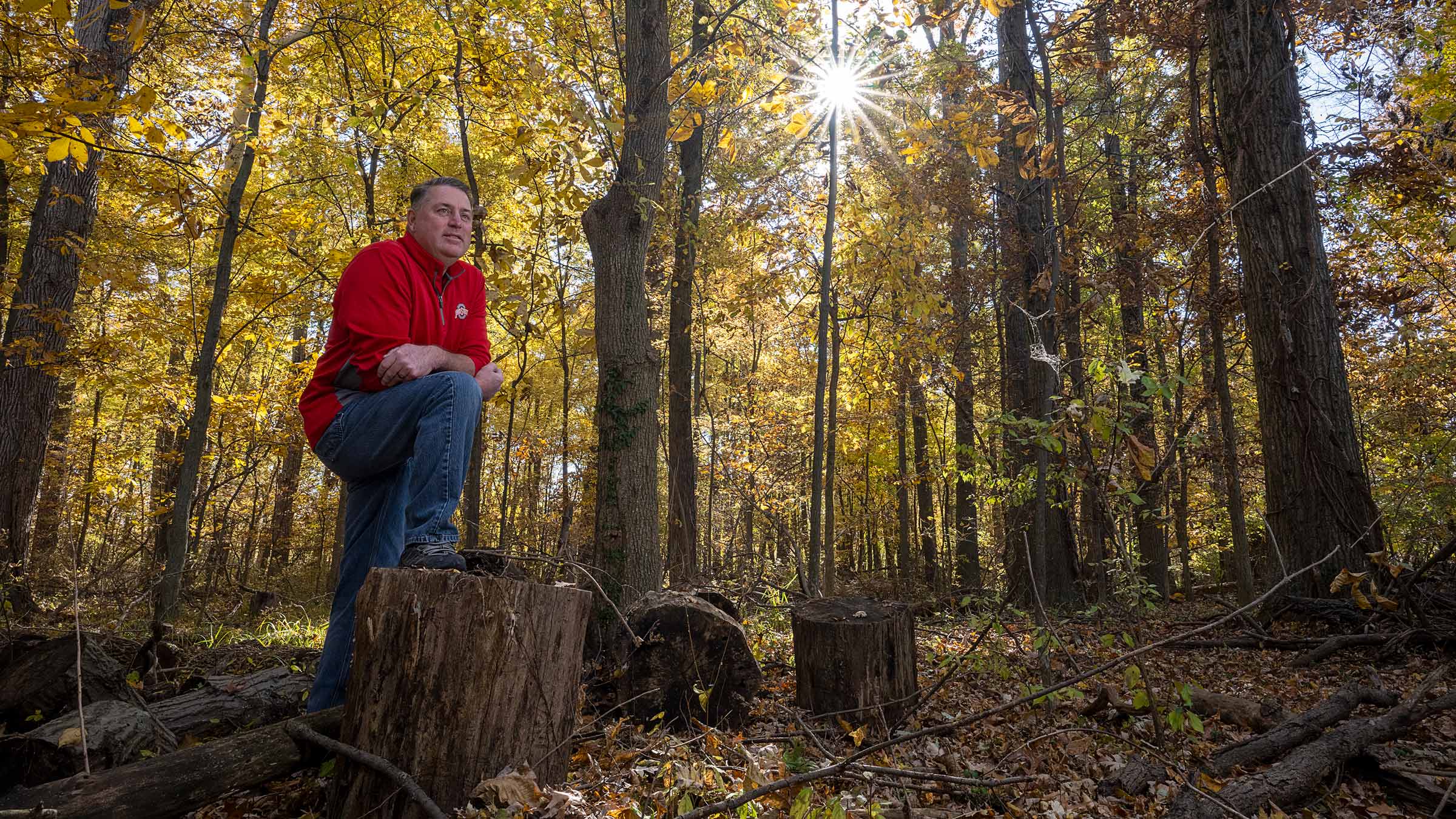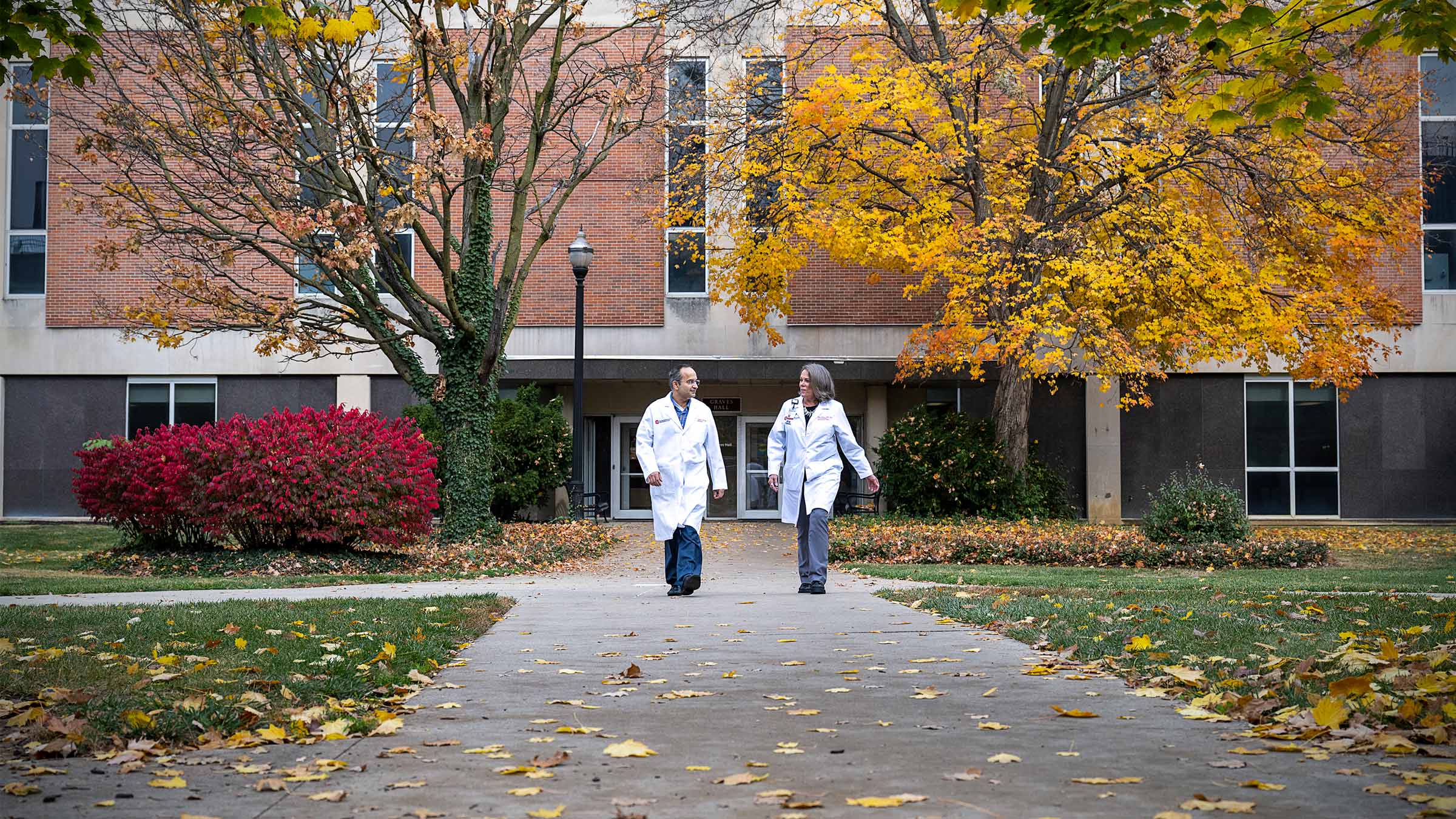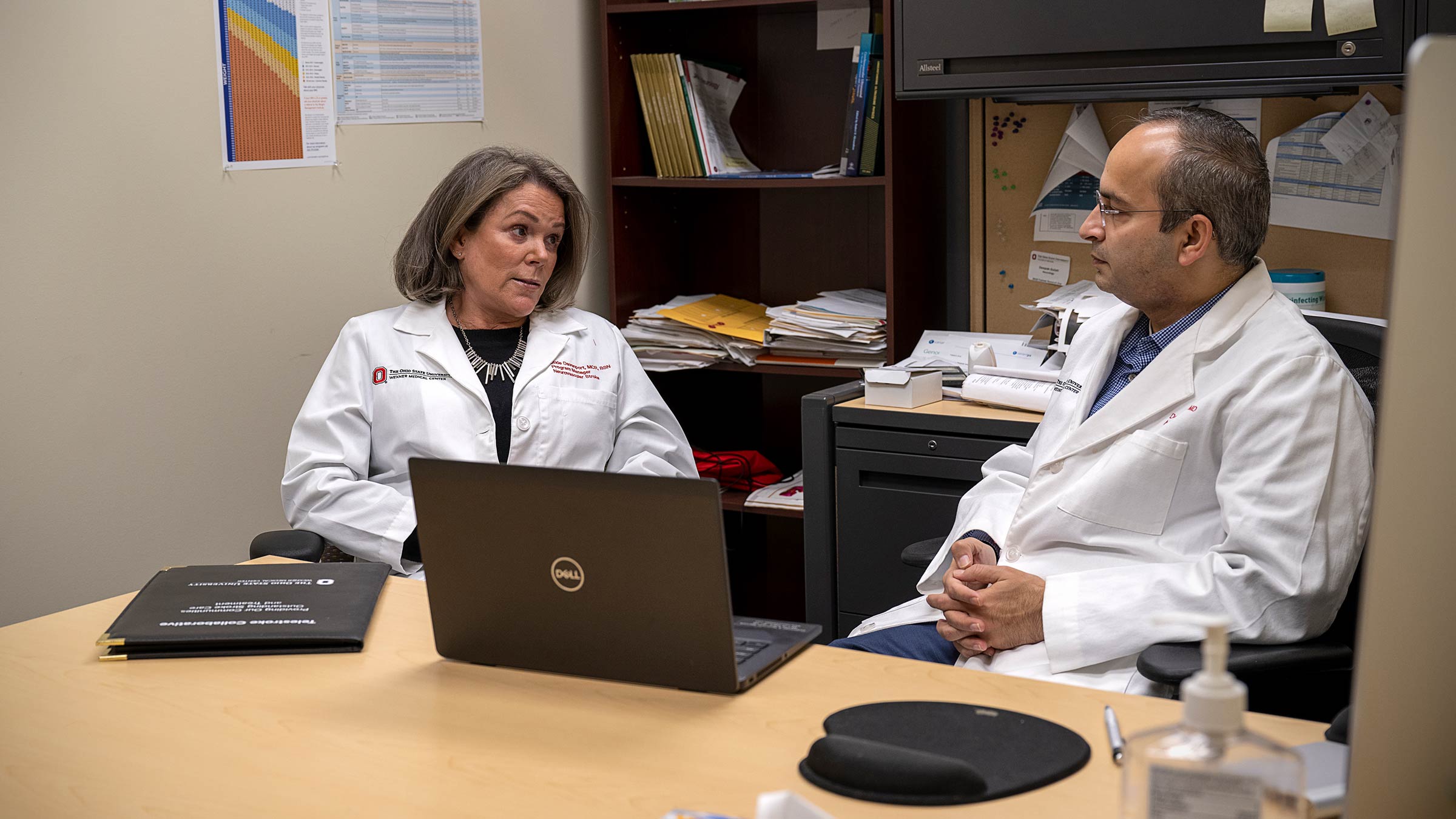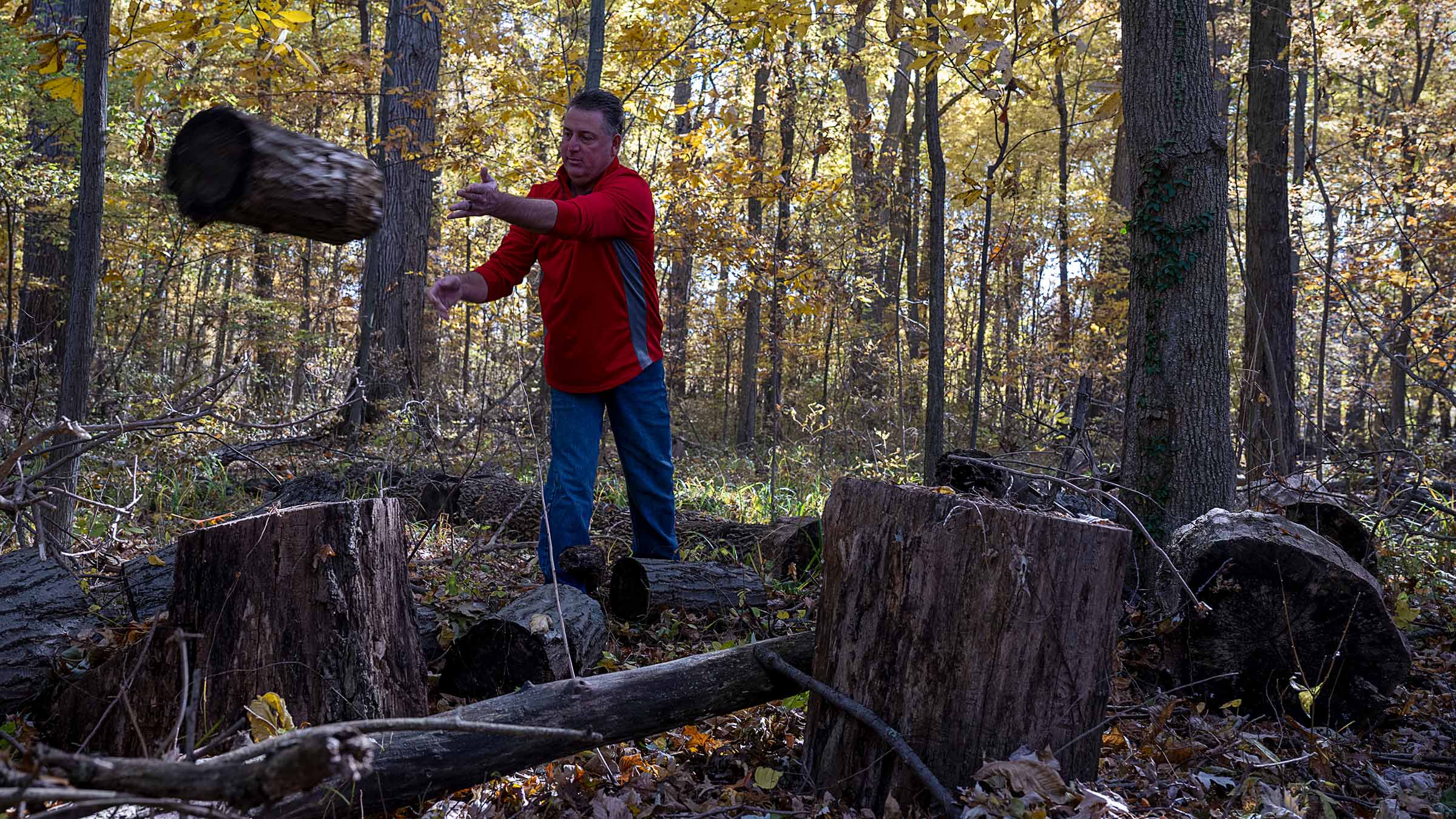When minutes count, telemedicine program speeds stroke treatment to rural patients
An Ohio State partnership extends expertise across the state to reduce the harmful effects of strokes
For much of his life, Duane Gross has lived in a home surrounded by woods and water on an inlet to Indian Lake.
He’s always enjoyed how close nature feels and how far away traffic is.
On Jan 5, 2021, Gross was working from his home in rural northwest Ohio when he noticed everything started to blur, the words on the screen in front of him, the trees outside his windows. His body felt tingly on the left side. Fearing he might be having a stroke, he and his wife got in the car. The nearest hospital, Mary Rutan Hospital in Bellefontaine, was about 25 minutes away.
They knew the faster Gross could be treated, the better his chances of recovering. Through a partnership between Mary Rutan Hospital and The Ohio State University Wexner Medical Center, a neurologist specializing in strokes nearly 60 miles away at the Ohio State Wexner Medical Center campus was on stand-by and took Gross’ case. After diagnosing the stroke, the neurologist then prepared for Gross to be transferred to the Ohio State Wexner Medical Center that day.
There Gross took additional tests as well as medication to try to prevent a future stroke. Still, two days later, he had a second one, this time life-threatening.
“I thought I was fairly healthy,” says Gross, who was 56 at the time.
“All my friends said I was the last person they thought would have a stroke.”
Returning to the Ohio State Wexner Medical Center, Gross had surgery to clear a blocked artery, and then months of rehabilitation helped him relearn to walk and talk.

Extending stroke expertise across the miles
Getting care for Gross from the exact specialist he needed was possible because of a partnership the Ohio State Wexner Medical Center has with Mary Rutan Hospital and 28 other rural hospitals across Ohio. Around the clock, every day of the year, a stroke neurologist at Ohio State is on call to diagnose stroke patients brought to the rural hospitals in the Ohio State Telestroke Network, the state’s largest.
“We’re reducing the impact of strokes on a lot of people who experience them,” says Deepak Gulati, MD, a stroke neurologist and associate professor of Neurology in the Ohio State College of Medicine who oversees the Telestroke Network.
The Ohio State Wexner Medical Center is a designated comprehensive stroke center, meaning it meets federal standards for treating the most complex stroke cases. On duty at all times, stroke neurologists and neurosurgeons can rapidly treat patients having a stroke and reduce the potential for long-term brain damage or death. Those patients could be in Columbus or hundreds of miles away in southern Ohio or in western Ohio near the Indiana border.
“If you’re at a rural hospital in the network, you will get the same treatment for a stroke as you would if you had showed up at the emergency room in Columbus,” Dr. Gulati says.

Minimizing the effects of stroke
During a stroke, blood supply to the brain is partially or fully blocked. Brain cells can die within minutes. Most strokes happen because a blood vessel to the brain is either narrowed or completely blocked, which is called an ischemic stroke. Plaque, made of up of fatty materials like cholesterol, can build up within the walls of blood vessels, restricting blood flow.
A less common and more serious stroke happens when a blood vessel in the brain bursts, which is called a hemorrhagic stroke. Uncontrolled high blood pressure, an ischemic stroke or other conditions can bring on a hemorrhagic stroke.
Nationally, stroke is the leading cause of long-term disability and the fifth leading cause of death. In Ohio, strokes are taking an even higher proportion of lives. Stroke is the fourth leading cause of death in the state.
Every month, stroke neurologists at the Ohio State Wexner Medical Center handle 400 to 450 cases of strokes at hospitals in the Ohio State Telestroke Network. They do virtual exams of each patient and recommend treatment either at the local hospital, if the hospital has the capability, or the closest comprehensive stroke center, which could be at the Ohio State Wexner Medical Center.
With a nationwide shortage of neurologists who specialize in treating strokes, sharing the expertise of stroke neurologists from the Ohio State Wexner Medical Center is saving lives. And that’s also increasing the odds stroke patients will recover any brain capacity they may have lost.
Someone experiencing a stroke may have trouble speaking and walking, feel confusion, dizziness, a headache and numbness in their face, arm or leg, especially on one side of the body.
“One minute you’re fine and the next you’re not able to use one side of your body. It can definitely be scary,” Dr. Gulati says. “Everyone is looking for some ray of light in the situation.”
That “light” is treatment, a clot-busting medication or, if necessary, surgery.

Why rapid stroke treatment matters
Since the Ohio State Telestroke Network was created 12 years ago, the number of participating hospitals has expanded from a handful to its current 29.
Response times have gotten even faster.
On average, stroke patients taken to one of the hospitals in the Ohio State Telestroke Network are treated with a medication to stop the stroke and reverse brain damage within one hour of the time they arrive at the partner hospital, Dr. Gulati says.
That’s important because the longer a stroke is left untreated, the greater the risk of brain damage. Every 30 minutes of a stroke can cause a 10% decline in brain function.
The clot-busting medication, recombinant tissue plasminogen activator, also known as tPA, or another medication, tenecteplase, can only be given to a patient within 4½ hours of when a stroke began.
As a result of the Ohio State Telestroke Network, more people in Ohio who suffer a stroke are getting a surgery or medication to break up the clot, increasing their chances of returning to the quality of life they had before the stroke.
“These patients are getting the care that they need — and quickly — even though they're not in Columbus or any other major city in Ohio”Dixie Davenport, telestroke program manager“We’re giving hospitals the education and the tools to identify strokes sooner, get the treatment going sooner and get patients on the road sooner if they need to be transferred to Columbus,” says Dixie Davenport.
During Gross’ first stroke, a blood vessel narrowed at the back of his brain, slowing blood flow. At the Ohio State Wexner Medical Center, he was given a medication to prevent further strokes. Still, it’s common for a patient who experiences a stroke to be at risk of another. The same vessel that had narrowed during the first stroke became completely blocked, and Gross had another stroke two days after the first one.
He was standing in his kitchen cutting up food for his dogs when he had to grip the counter to keep from falling. He yelled for his wife, who was in another room. Helping him get down onto the floor, she gave him CPR when he passed out and called 911. A local rescue squad drove him to Mary Rutan Hospital, and from there a medical helicopter flew him to the Ohio State Wexner Medical Center.

When stroke treatment stays close to home
Most stroke patients examined virtually by an Ohio State neurologist remain at the hospital where they were initially brought for treatment. But if the patient is experiencing a hemorrhagic stroke or a stroke that involves a major artery to the brain, the patient will be brought to Columbus, sometimes by helicopter.
“We want to take the more complex patients that these hospitals can’t,” Davenport says.
“If there’s a way to keep that patient in their own community, we want to do that.”
Only about 25% of the patients treated through the Ohio State Telestroke Network are transported to the Ohio State Wexner Medical Center. The rest are treated in their nearby hospital.
All 29 of the hospitals in the network have the ability to administer clot-busting medication. Some have a neurologist on duty, but few have a stroke neurologist or neurosurgeon on staff.
“We are absolutely saving lives and brains,” Davenport says. “We're making sure everything that needs to be done for the stroke patient is being done.”

‘Lucky to be around’
Not long after the helicopter landed at the Ohio State Wexner Medical Center, Gross had surgery to break up the clot that caused his second stroke.
“If he hadn’t had the surgery, he might not have survived,” Dr. Gulati says. “Or he may have been left with significant brain damage and needing care 24/7.”Instead, Gross’ brain healed. Over four months of rehabilitation, initially at Ohio State and later at Mary Rutan, he would learn to walk without a walker or a cane and to talk with little to no slurring. He also had surgeries to eliminate double vision.
“I feel lucky to be around today,” he says.
In the past year, Gross has gotten back to everything in the outdoors he’s long loved: fishing, mowing the grass, cutting wood and hunting mushrooms in the woods near his home.
“There’s not much I can’t do,” he says. “I can still do everything I was doing before the strokes. I just can’t do it as quickly.”

Every stroke is different, and where you go for care matters.
Ohio State’s Comprehensive Stroke Center is at the forefront of stroke care and our teams are developing and delivering the most advanced and innovative treatments.
Learn more



